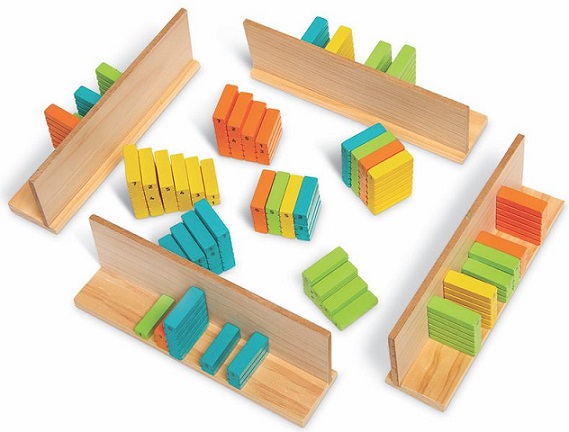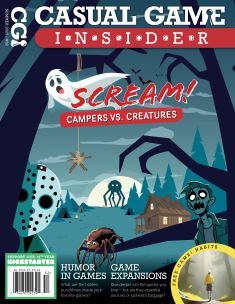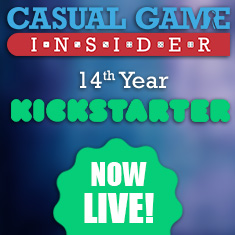Create Sets and Runs with Stacking Blocks in Mindblock

Blue Orange’s new game of creation and combination, Mindblock is about creating sets from the blocks in your hand and those on the table.
The ability to stack blocks and turn them into their combined value ensures the game is about more than luck of the draw and which blocks you pull from the bag, but also your ability to think outside of the box.
Gameplay
At the start of the game, each player draws seven to ten blocks (depending on player count) without showing them to the other players, and places them on their screened player trays. Blocks come in four different colors and seven different sizes numbered one through seven (with the ones being the smallest and the sevens being the tallest). The goal of the game is to be the first player to get rid of your blocks by creating sets and runs in the center of the table. Sets consist of three or four blocks of different colors but the same height, and runs are three to seven blocks of the same color in ascending order (three, four, and five for example).
On their first turns of the game, each player must attempt to play a run or a set into the middle of the table, whose combined value of the blocks equals fifteen. If you can’t, the player on your right draws a block at random from the bag, and hands it to you. On your future turns, you may do one of two things. You may either play one new run or set into the center of the table, or you may rearrange the blocks already on the table. If you cannot take a legal action on your turn, a block is drawn at random from the bag for you.
When rearranging the blocks on the table, you may move them around to create new sets and runs; however you must add at least one block from your hand to the table, blocks cannot be removed from the table, and at the end of your turn all blocks must be part of a legal run or set. Blocks that are a matching color can be stacked on top of each other to change their value (though that value cannot be higher than seven). For example, if you are creating a set of sixes, you can stack a one on top of a five and it can now join the set.

Review
Mindblock borrows elements from classic set collection games like Rummikub but puts a new spin on it with its use of wooden blocks and the stacking ability. The option to combine blocks to create taller ones gives you a new element to consider, particularly as you have all the blocks in the table center at your disposal to rearrange. When you pull off a clever move, playing multiple tiles and rearranging the table in unexpected ways, it feels immensely satisfying.
The components themselves are well made and enjoyable to play with. The blocks are sturdy, and their design, with little indentations at each level, is well thought-out. When you’re stacking, you can easily see exactly which blocks you need.
It is a bit awkward to try and pull blocks at random from the bag. Because the blocks come in such varying sizes, you do have some idea of what you’re pulling out, so it’s difficult to be completely fair. You don’t entirely know what your opponent needs, but you do have the information of what is already on the table.
Also, while the game progresses and more blocks are put out on the table, you have more options on your turn — meaning that the turns can slow down, and there can be too much downtime between turns, if someone takes too long adjusting the blocks on the table and trying different things. The game does suggest a variant where turns are timed, and if you go over two minutes you have to take back any blocks you’ve played and draw two blocks from the bag. In a four player game this can still mean up to six minutes between your turns, but it’s going to depend on your game group, and how slowly everyone plays. A two or three player game certainly is best for avoiding this downtime issue.
Mindblock is a relaxed and thoughtful game. It’s perfect for a low-key evening or for lovers of logic. There’s some clever strategy in there as well, knowing each block you play into the table can be used by your opponents, and deciding which blocks to play and when, keeping in mind that some are more versatile for stacking than others. If you enjoy abstract games, Mindblock is well worth a try.
Pros: Stacking adds a new element to set collection, nice component quality, satisfying gameplay when you make a good move
Cons: Drawing random tiles from the bag is difficult, downtime between turns can potentially be long (depending on the players)
Disclosure: we received a complimentary review copy of this game.









